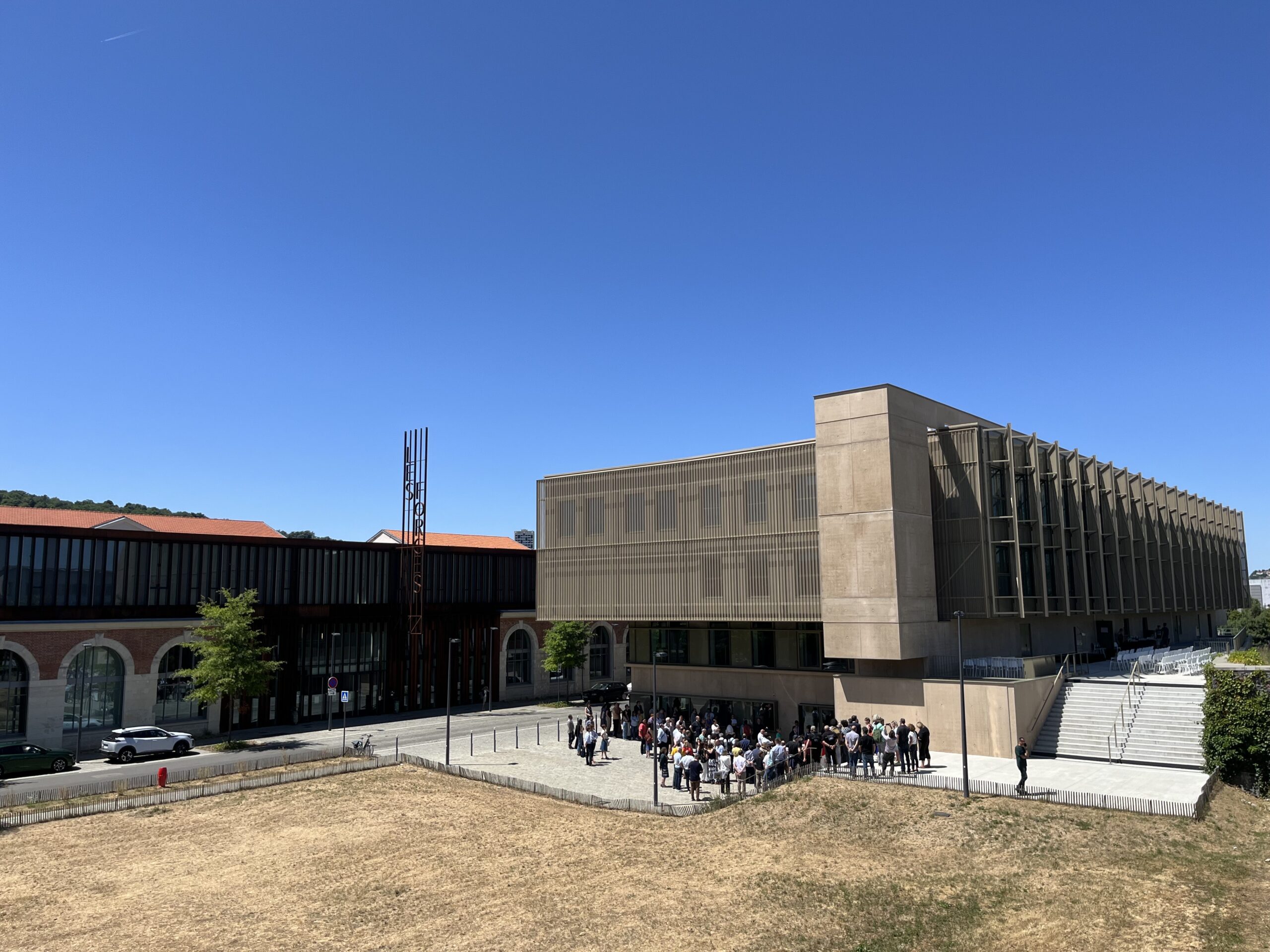Inauguration of UJM's Sciences | Manufacture building
On Thursday, July 10, 2025, Université Jean Monnet (UJM) inaugurated the Sciences – Manufacture building on its Manufacture campus in Saint-Étienne. This new building marks a major step in the structuring of a scientific, technological and educational center of excellence at the heart of the city’s creative and design district.
The 5,395 m2 building, which began construction in September 2021 and will be completed in September 2024, is spread over three levels: a mineral base on the first floor, a glazed level promoting transparency and openness, and a final suspended level made up of four blocks embodying the project’s four main scientific components.
The light bronze metal envelope recalls the district’s industrial heritage. The alignment of the main staircase with the Forges building and the former Manufacture factories underlines the architectural unity and historical continuity of the site.
The new building was designed by Pierre-Louis Faloci, Grand Prix national de l’architecture 2018. It blends perfectly into the urban and industrial landscape of the site.
A facility for research and training through research
The Sciences – Manufacture building houses four structures:
- UJM’s Faculty of Science and Technology (chemistry, mathematics and geology departments) for Master’s level courses and above;
- The Polymer Materials Engineering Laboratory (UJM / CNRS / Lyon 1 / INSA Lyon), Saint-Étienne campus;
- Laboratoire de Géologie de Lyon – Terre, Planètes, Environnement (UJM / CNRS / Lyon 1 / ENS Lyon), Saint-Étienne campus;
- Institut Camille Jordan (UJM / CNRS / Lyon 1 / École Centrale de Lyon / Inria), Saint-Étienne campus.
The Faculty of Science and Technology and the three laboratories have specialized spaces adapted to their needs: classrooms, chemistry and geology practice rooms, preparation and microscopy rooms, microplasturgy and experimentation workshops, a clean room (etc.), as well as a unique lithotheque containing rare samples from the polar regions, regularly consulted by researchers from outside the University.
